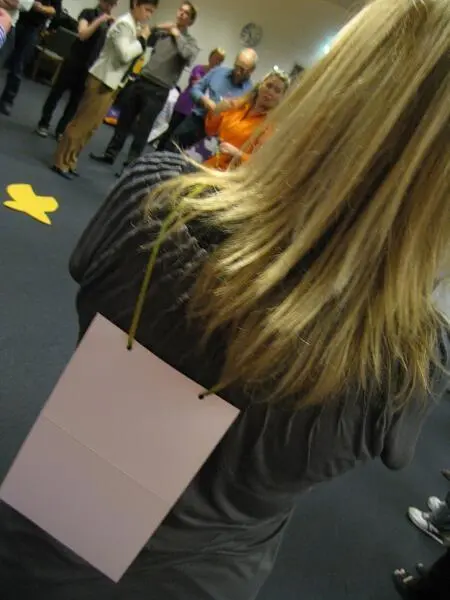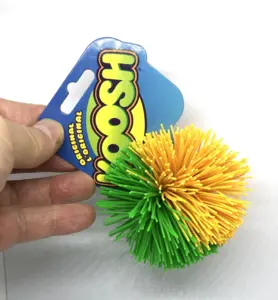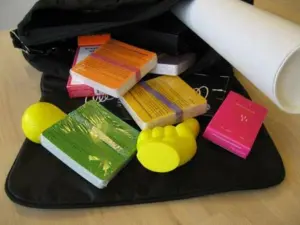A blog about leadership: This is why everybody must appreciate everyone in the team
Call for price
+45 71 92 55 63
This is how praise and appreciation becomes your boomerang
Imagine that all your employees are active, make each other happy, appreciate each other visibly as they move quickly around the floor in your meeting room. As in the picture above. You can easily imagine that. So now I want to tell you what this article has to do with 'motivational leadership'. I promise you that more news will appear along the way. Let's get started.
The best exercise in the world
I will start by telling you about one of the best exercises in the world. An exercise is one that teachers and managers throw employees into because they have to try something in 'reality'. Some exercises are wildly fun and inspiring. Other exercises are used because the teacher has spotted a need for a little involvement. Others use exercises because they want to set something in motion, which is certainly just an icebreaker.
An exercise that explains itself
Whatever the intent, some exercises are more appropriate than others. The exercise I want to tell you about is appropriate, short, fun and very inspiring. You hardly need to talk about the exercise afterwards. It explains itself. As a leader, you can easily complete the exercise and talk briefly and sensibly about it afterwards.
A cardboard card, a string and a pen
I usually hand out a pen, a cardboard card and a string to each participant. The cardboard card is equipped with a few holes through which the cord can be pulled. The cord can then be tied so that the card can be mounted around the neck.
Then I start explaining the exercise. First, I invite everyone out on an open floor. There they stand a little excited and expectant. Some think, 'Oh, no, now we're going to play.' Others think, 'Finally a little variety.' But I usually go to an explanation of what it means to give each other a team praise, recognition, and appreciation. I show how the exercise will proceed. The card should hang on the back so that it is easy to reach with a ballpoint pen. I take time on the stopwatch and everyone has 3 minutes to write a concrete appreciation on as many backs as they can reach.
Praise so that the windows mist
Everyone understands the task. They start immediately. Everyone looks happy in their faces. Slowly, 'snakes' are formed by employees who are in the process of writing and giggling and moving quite fast. I keep an eye on the time and say out loud, '2 minutes left.' It usually puts a little more momentum in the hoses. A minute later I say, '1 minute left.' - and half a minute later I say: '30 seconds left. '
The time is up
When the time is up I say: 'Time has passed. Finish with the back you are working on and lower the pen. And then you may as well sit down again - without reading what is written on your card on your back. '
Everyone sits down, even though they have a strong desire to read what has been written on their backs. But I put them on the torture bench. We'll just talk about what happened on the floor. I ask, 'What did you see?'
Of course, they have all been extremely busy writing, being written on, giggling and finding new backs. Therefore, they have a bit of a hard time just describing what was going on out on the floor. Therefore, I repeat quietly: 'What did you see?'
If they are not inclined to tell what they saw, then I help them a little along the way: 'What did you see?' - while pointing to an eloquent employee. Then the words start to flow and there are always some very nice and important points. I ask the same question several times and each time new and exciting arguments emerge.
What can be used and what can not be used?
To get started on finding out what the exercise should do good for and to anchor 'appreciation' in the team's everyday life, I continue my questions: 'What can you use from this exercise?' 'What can you use too?' 'More you can use?' It is the positive and appreciative approach.
But what if there is a single skeptic in the team, then he must also join.
Involve the skeptic
Therefore, I also ask: 'What can you not use from this exercise?' Awaiting an answer. Feel free to pull an answer out of them. There must be something you can not use from this exercise. If the skeptic does not express himself, then it becomes resistance. And resistance is no good and it costs a lot of money. Therefore, you need to make room for skepticism and then find out what that skepticism is really about. The skeptic is hardly skeptical about everything. He is skeptical of anything specific: 'We can not run around on the meeting floor every time we have to appreciate each other, can we?'
Thank him for his good news: 'That's well said. No. We do not have to run around at every meeting when we have to appreciate each other. Fortunately, there are many different ways we can appreciate each other. We can try these many ways and then choose ours. There are a thousand ways to say THANK YOU. There are a thousand ways to say GOOD or GREAT. There are a thousand ways to say WITHOUT YOU WE WOULD NOT SUCCEED. '
What will we do?
From here, it's about what the team chooses to do tomorrow, next week, next month, the rest of the year. If they discovered that 'Praise on the back' is good and that it works, then it should be used for more. From here you have to make a plan for appreciation.
Thank you for your commitment
They have all been very cooperative. 'Thanks for the help everyone. Now you must read what is written on your card on the back. ' Giggling can be heard again.
There is more where this exercise comes from
Write to me at michael@LEADERSwarehouse.com and I'll probably help you and your team getting more ideas on how to stick to 'praise, recognition and appreciation'. The exercise with 'Praise on the back' is not intended as a stand-alone activity. It is intended as an inspiring presentation for a culture where appreciation is a natural part of the company's daily life. And it's not just a neat idea or a quick fix. It is all based on a driving force we all know. Hang on. Read on. Now it's getting big.
Choose your boomerang
Every human being has an urge to reciprocate. It is a fundamental driving force in all of us. It has been so at all times and in all cultures. In English it is called 'reciprocity urge'.
When you give me a pat on the back, I'll give you 'something' back. When you are kind to your employees, they are kind to you. When you show trust, respect and care, you get it back. Like throwing a boomerang. It's coming back.
Therefore, you need to choose which boomerang you are throwing out. It's coming back to you again.
As a leader, what you send off to your team is vital. And you can even control it. Therefore, 'Praise, recognition and appreciation' is crucial because you as a leader introduce your team to 'recognition' in a structured form and because you implement 'recognition' as an item on the agenda. You are throwing out a 'recognition' boomerang.
And when you throw out a 'recognition' boomerang, what do you think comes back from your employees?
Written by Michael Meinhardt, LEADERS WAREHOUSE.
There is no reviews yet. Be the first to write us your opinion








